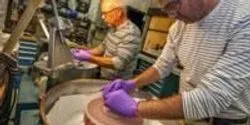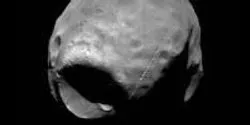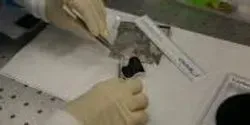All by Lawrence Livermore National Laboratory
Filter by
AllArticlesAudioEbooksEventsInfographicsNewsProductsSurveysDocumentsVideosVirtual EventsWebinars
Computer simulations exploring the effects of shock waves on crystalline HMX, performed by Ryan Austin, a staff scientist in Engineering’s Computational Engineering Division, and a team of Lawrence Livermore National Laboratory researchers, are featured on the cover of the May 14 issue of the Journal of Applied Physics.

Growing up in a household of artists and engineers, Peter Thelin was destined for a career in which artistry mattered. Only for him, art has come in the form of manipulating the shapes, sizes and qualities of optics. And now, as one of the few remaining practitioners of hand-polishing optics, Thelin is passing his artistry along to the next generation of optics specialists.

Agricultural officials who seek to detect diseases affecting the commercial swine industry may gain a new ally — a biological detection system developed by Lawrence Livermore National Laboratory (LLNL) researchers.

Using the same baking soda found in most grocery stores, Lawrence Livermore National Laboratory scientists, along with colleagues from Harvard University and the University of Illinois at Urbana-Champaign, have created a significant advance in carbon dioxide capture.

In 2014, Lawrence Livermore National Laboratory (LLNL) built on a 62-year tradition of translating basic science into technologies that ensure national security, address pressing real world problems and expand the boundaries of fundamental science.

As part of the Department of Energy’s Innovative and Novel Computational Impact on Theory and Experiment (INCITE) program, eight Lawrence Livermore National Laboratory (LLNL) researchers have been awarded nearly 800 million core hours on two of America’s fastest supercomputers dedicated to open science – Mira, an IBM Blue Gene/Q system located at Argonne National Laboratory (ANL), and Titan, a Cray XK7 system located at Oak Ridge National Laboratory (ORNL).

Using satellite observations and a large suite of climate models, Lawrence Livermore scientists have found that long-term ocean warming in the upper 700 meters of Southern Hemisphere oceans has likely been underestimated.
















